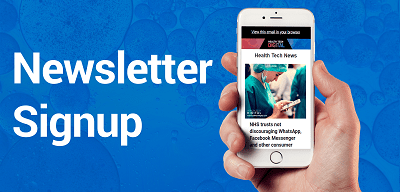
It’s been a year since Wuhan reported its first case of COVID-19. Since then, over one million people have died from the virus. It’s easy to point out all of the negative effects this pandemic had on our lives, but there have also been moments of positivity and inspiration. Nowhere is that more evident than in the healthcare industry.
The healthcare sector has been focused on innovation for some time now, as a direct result of coping with an ageing population, the prevalence of chronic diseases, evolving care models, high labour costs and staff shortages. Rather than halting this progress, the COVID-19 crisis has in many ways expedited it, as the global healthcare industry rallies to contain and cure the virus.
A digital approach to disruption
As the world struggles to manage the virus, whilst dealing with pre-existing health issues, the healthcare industry is in a state of flux, evolving on a daily basis. Part of tackling the many challenges has involved embracing digital technology, an area that has been neglected in previous decades but in recent months has played an important role in controlling COVID-19. To ensure that the shift to digital technology is embraced and that it better serves the changing needs of patients, the pandemic has brought forth a wave of disruption that will forever change the way care is provided, hopefully for the better.
Today’s consumers are more empowered than ever before, with multiple channels to engage with businesses of all kinds. Banking, shopping and travel have shifted online in the last decade, and we’ve come to expect all interactions to happen digitally, in real time. This level of convenience, transparency and personalisation also includes healthcare. In fact, the majority of people believe healthcare solutions should be accessible through modern and convenient forms of communication. Whilst the expectation is there, the execution is often lacking, inconsistent or non-existent. That can’t be blamed solely on the healthcare providers; prior to the pandemic, consumers were reluctant to interact with their healthcare providers online fearing a lack of privacy, but with the use of track and trace across the globe in the fight against COVID-19, those fears have been reduced through need and education.
The digital fight against COVID-19
PathCheck Foundation was spun out of MIT in March 2020 to build digital solutions to help the fight against COVID-19. Its global mission is to contain the pandemic by building a foundational public health technology platform and mobile apps that make digital contact tracing, case management, epidemiological information collection and citizen communication easier and faster.
PathCheck partnered with Boston-based agency Rocket Insights (part of Dept) to design and build an app for digital contact tracing using privacy-preserving GPS data. This was followed by a second, separate app for exposure notification using the Google Apple Exposure Notification framework. This app uses Bluetooth to anonymously and securely identify when phones have been near each other and track when potential COVID-19 exposures have occurred. The apps enable communities to work together to stop the spread of the virus and complement other public health strategies, including manual contact tracing efforts.
With 1,800 volunteers and a large core team of technology and public health professionals, PathCheck supports a range of technologies to help slow the spread of COVID-19. Teams in seven U.S. states and countries are implementing PathCheck technology to create exposure notification mobile apps for their communities, including Hawaii, Guam, Puerto Rico, and Cyprus.
PathCheck believes the future of digital public health will include a wide array of mobile apps, sensors, technologies, data streams and AI. All deployed in ways that protect the privacy and liberty of individuals. These capabilities will be used to prevent new pandemics, deliver public health interventions over a wide range of health issues, and enable the development of new diagnostics and treatments that result in a healthier world.
“Beyond addressing the COVID-19 pandemic today, our goal is to make PathCheck Foundation a lasting institution that supports innovation, standards, research, and services at the intersection of technology and public health,” said Ramesh Raskar Ph.D., associate professor at MIT Media Lab and founder, chairman, chief scientist at PathCheck Foundation.
The technology and consumer adoption of COVID-19 track and trace systems across the globe could be the turning point in mass adoption of digital healthcare solutions, spurred by the development of robust IT solutions.
As Aashima Gupta, director of global healthcare solutions, Google Cloud, notes “The IT systems and solutions driving these rapid healthcare evolutions not only help address urgent, ongoing needs, but also establish a foundation for long-lasting improvements, particularly those that lead to systems capable of resilience in the face of future disruptions.”
When benefits outweigh concern
So, if the technology is being rapidly developed to enable digital healthcare solutions, what’s holding us back from extending it beyond the pandemic into day-to-day healthcare provision? From a consumer perspective, there is a hesitance to share private medical data digitally. However, as the digital evolution of the banking sector has demonstrated, it is possible to shift consumer behaviour to accept and embrace digital options.
Simon Walsh, Strategy Director, Dept said “If we look to banking, we see an example of where consumer confidence in digital technology has accelerated. People are perfectly happy to use online banking because it’s so much more efficient; the benefits outweigh any concerns. As we see an increase in digital contact points within healthcare, whether that be digital GP appointments, virtual physiotherapy, or apps to advise on the management of diabetes, the behaviour will become normalised. When consumers see the efficacy of these systems, they will become less worried about any perceived data sharing or quality of service concerns, opening up the opportunity for further development and adoption of centralised electronic healthcare records.”
As the longevity of the pandemic increases, more and more health issues are being overlooked. Be it treatment for cancer, aches and pains, unusual lumps, headaches – the general malay that you would visit your doctor or hospital for consultation and treatment. For example, the Irish Times recently reported that nearly 90 per cent of women have not responded to invitations to undergo cervical cancer screening in recent months; the implications of this are extremely concerning. While we try to find the new normal in this period of uncertainty, what’s being ignored and overlooked is the latter day effects on our already strained healthcare resources.
We need to build trust
One solution to this impending healthcare crisis is the empowerment of the patient through digital tools. Nudge behaviour, such as timely reminders for breast or prostate cancer screening, can empower citizens to manage their own health, while actively encouraging, reassuring and educating them on the safety and importance of undergoing these checks. Research shows that effective communication between doctors and patients is linked to better health outcomes, more appropriate medical decisions, and higher patient satisfaction.
“We need to nudge consumer behaviour, even if to start off with it’s just sending timely reminders.” said Simon Walsh, Strategy Director, Dept. “By encouraging people to take more control over their health, we can empower patients, while protecting the resources of our healthcare systems. Doing so will make healthcare provision more efficient and effective. The technology already exists, as does the data protection; there are different levels of privacy, all of which can be controlled by the user, ensuring that delicate information isn’t accessible out of your control. It’s now just about building trust.”
This doesn’t feel like a massive leap from where we are today. The shift in consumer attitudes to embrace digital healthcare is already underway with apps to nudge health-impacting behaviours, whether it be the Fitbit or Apple watch, the QuitNow! smoking or Drink Free Days app, the step monitor on a phone, and now the track and trace apps. Data is being collected to benefit the user’s health, it’s just not as obvious as a direct link to their medical files.
The healthcare industry has been able to respond quickly to the challenges of the pandemic thanks, in large part, to the new technologies and processes that it’s been slowly rolling out for several years. These technologies are digital-first, open and scalable, so can easily be deployed quickly for new use cases. The agility of modern technology helps the industry make use of existing systems and services in new ways going forward. Google, for example, provides a chatbot that healthcare providers can integrate into their own systems. The chatbot can start the conversation with a patient and collect relevant information before handing them off to a live video connection with a healthcare professional. Providers can also launch Google Meet, the company’s video conferencing solution from within an electronic health record, giving doctors access to and the ability to modify records in real-time.
Digitisation of healthcare will remain a top priority
The digitisation of healthcare is clearly an ongoing priority, as shown by governments across the world. Australia has developed the National Digital Health Strategy and set up My Health Record as an opt-out medical record for all Australians. The UK has established NHS Digital and NHSX to transform NHS and social care, and the Danish government has announced investment into an app-based platform known as the World-Class Digital Service (WCDS) that can be used to access all publicly held data on Danish citizens.
In the midst of this progress, there are challenges that will remain, as with any industry undergoing such a major transformation; costs, complexity, evolving needs and scenarios, and ongoing privacy issues. It’s clear, however, that we’ve turned a corner in the healthcare industry to a future that looks to focus on prevention, innovation and access for all citizens, all at the touch of a fingertip.
Author:
Mellissa Flowerdew-Clarke
Marketing Director, Dept











